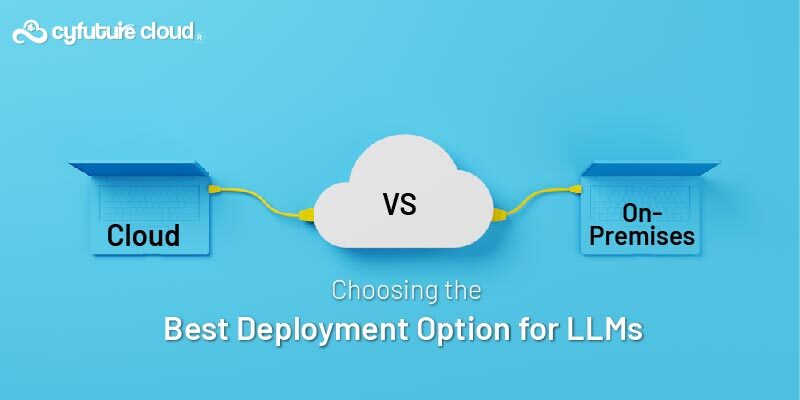Modern technology is not complete without cloud computing, which enables companies to take use of the internet’s power and accomplish their objectives more quickly and adaptably. The cloud is always changing, presenting new possibilities and difficulties that companies must be aware of to remain competitive. Therefore, it’s essential for businesses to stay current with the latest cloud trends if they want to take advantage of cloud computing and stay relevant.
It is anticipated that 2023 will bring about substantial developments and improvements in the world of cloud computing that will influence how organizations operate in the future. We’ve highlighted three major cloud trends that you should be on the lookout for in order to keep you in the know. These developments include the development of serverless computing, edge computing, and multi-cloud solutions. As organizations continue their migration to the cloud, each of these developments offers certain possibilities and difficulties that they should take into account. Continue reading to learn more about these patterns and their effects.
Crisis Management
The COVID-19 epidemic has had a major effect on the world economy and changed how businesses function. In order to continue operations, many businesses have had to swiftly adjust to remote labor and depend increasingly heavily on cloud computing. As a result, cloud acceptance and usage have increased dramatically. According to Gartner, the global public cloud services market will rise by 17.3% by 2023 to reach $623.3 billion.
However, as cloud computing is used more frequently, effective crisis management techniques are required to handle potential disruptions. Businesses must be ready for every eventuality that might harm their cloud infrastructure, from cyber breaches to natural disasters.
Companies have devised a variety of techniques to manage their cloud infrastructure in order to guarantee business continuity and lessen the effect of possible crises. Here are a few instances:
– Plans for Disaster Recovery: Businesses are developing disaster recovery plans that specify the steps to be taken in the event of a crisis to restore important data and applications. These preparations involve frequent data backups and the implementation of redundancy to guarantee that services can be rapidly restored.
– Multi-Cloud Strategies: To reduce the risk associated with depending on a single cloud provider, several businesses are using multi-cloud strategies. By using this strategy, enterprises may distribute their workload over several clouds and prevent downtime brought on by a single cloud provider’s outage.
– Cloud Security Measures: In crisis management, cloud security is crucial. To guard against possible dangers, businesses are putting in place safeguards like firewalls, intrusion detection and prevention systems, and encryption.
The COVID-19 pandemic has so underlined the significance of cloud-based crisis management. Companies must make sure they have efficient plans in place to handle possible interruptions and lessen their impact as cloud use continues to expand.
FinOps Finds its Footing
An new discipline called FinOps, or financial operations, aims to maximize cloud expenditures by matching cloud usage and expenses with corporate goals. Businesses must now efficiently control cloud expenditures since cloud computing accounts for a sizable amount of IT investment. According to Gartner, 64% of firms see controlling cloud expenses as their top worry, making it the biggest problem confronting cloud adopters.
The lack of insight into cloud usage and prices is one of the main problems with cloud cost optimization. Accurately tracking cloud expenses gets more difficult as cloud setups become more complicated. FinOps may help in this situation by giving organizations access into cloud usage and prices and allowing them to manage cloud costs more successfully.
Businesses must concentrate on the following in order to successfully deploy FinOps practices:
– Cost Transparency: Businesses need to be fully aware of the expenses and consumption trends associated with the cloud. They must do this by putting in place procedures and technologies that offer real-time monitoring of cloud usage and expenditures.
– Resource Optimization: FinOps mandates that companies continuously optimize their cloud resources. To lower cloud expenses, this entails locating unused resources and getting rid of them.
– Cost responsibility: Organizations need to implement cost responsibility across all teams and departments. To achieve this, it is necessary to foster a culture of cost consciousness where everyone is accountable for controlling cloud expenses.
FinOps principles have been successfully adopted by a number of businesses, leading to considerable cost reductions. As an illustration, the software development business Atlassian cut their AWS costs by 25% by utilizing FinOps techniques. By using FinOps techniques, another firm, the cloud-based project management application Smartsheet, was able to cut its AWS costs by 40%.
Industry Verticals Gain Ground
The ability to quickly grow and innovate has altered how firms conduct their operations thanks to cloud computing. Industry-specific cloud solutions are gaining popularity as cloud usage keeps expanding. These solutions offer specifically designed cloud services and tools that address the demands of many sectors, including healthcare, banking, and retail.
Businesses may more efficiently solve industry-specific difficulties thanks to industry-specific cloud solutions, which is one of its advantages. Healthcare professionals may use cloud technologies, for instance, to analyze enormous volumes of patient data in real-time to enhance patient outcomes. Similar to this, financial organizations may expedite compliance and risk management using cloud technologies.
Greater flexibility and customization are two advantages of industry-specific cloud solutions. Businesses have a variety of pre-built cloud services to pick from that are tailored to their unique requirements, or they may create their own unique solutions utilizing cloud platforms like AWS or Azure.
Industry-specific cloud solutions have been successfully deployed by a number of businesses, with considerable commercial benefits. For instance, the healthcare business Johnson & Johnson used AWS’s sector-specific cloud capabilities to create a platform for linking cancer patients with clinical trials. Over 100,000 patients have already used the platform to find clinical trials.
Similar to this, Capital One, a financial services business, streamlined its compliance and risk management procedures by using a cloud solution tailored to the sector. In order to evaluate data and deliver in-the-moment danger warnings, the system makes use of AWS’s machine learning capabilities.
Conclusion
Businesses must keep current on the newest trends and technology to be competitive in the continuously growing cloud computing market. Crisis management, FinOps, industry-specific cloud solutions, and serverless computing are the four cloud developments that were covered in this article and are anticipated to have a significant impact on the cloud environment in 2023.
Crisis management will continue to be a high responsibility for organizations because to the ongoing COVID-19 outbreak. The epidemic has brought to light how crucial it is to have a solid cloud infrastructure in place in order to support distant work and guarantee company continuity.
As companies search for better methods to control cloud expenditures, FinOps techniques will also become more crucial. Businesses may optimize their cloud expenditures and realize considerable cost reductions by putting FinOps ideas into effect.
As organizations hunt for specialized cloud solutions that address their unique demands, industry-specific cloud solutions will continue to gain popularity. These solutions offer additional flexibility and adaptability, allowing companies to more successfully handle issues unique to their sector.
Finally, as companies explore for methods to enhance application development and cut expenses, serverless computing is anticipated to gain ground. Businesses may concentrate on their essential business logic by using serverless computing instead of worrying about managing and maintaining their servers.
In order for organizations to be competitive, they must stay current on cloud developments and use new technology. Businesses may optimize their cloud spending, boost operational effectiveness, and stimulate creativity by utilizing these cloud trends.
Send this to a friend

 Server Colocation
Server Colocation CDN Network
CDN Network Linux Cloud Hosting
Linux Cloud Hosting Kubernetes
Kubernetes Pricing Calculator
Pricing Calculator
 Power
Power
 Utilities
Utilities VMware Private Cloud
VMware Private Cloud VMware on AWS
VMware on AWS VMware on Azure
VMware on Azure Service Level Agreement
Service Level Agreement 



















